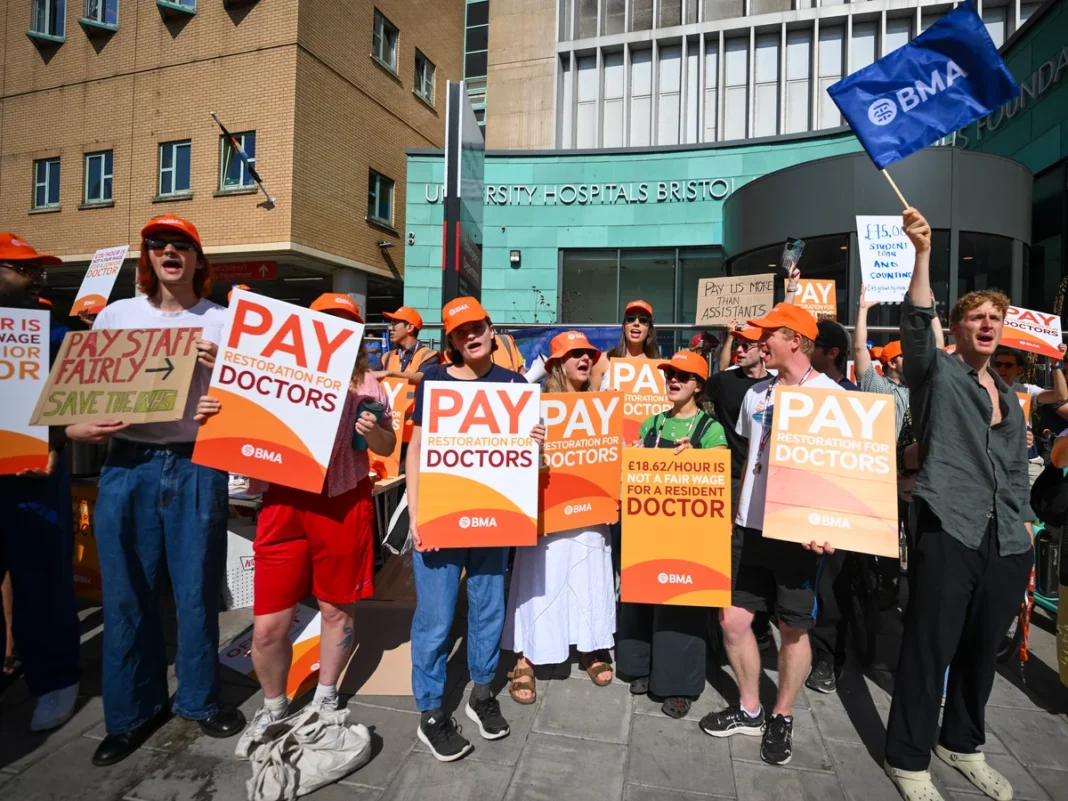The recent resident doctors’ strike has ignited a fierce disagreement between the British Medical Association (BMA) and NHS England. While the NHS claims fewer than a third of resident doctors participated, the BMA argues that work schedules and annual leave make accurate counts impossible.
NHS England stated that the resident doctors’ strike last week saw reduced disruption. Additionally, they maintained care for 10,000 more patients compared to last year’s strikes. Health Secretary Wes Streeting praised doctors who worked, calling for an end to the dispute.
However, the BMA strongly rejected these claims. They emphasized that complex shift patterns and pre-planned leave skewed the numbers. Furthermore, they challenged the NHS to provide concrete data.
The resident doctors’ strike centers on a demand for a 29% pay increase. Meanwhile, the government refuses to negotiate on pay. Streeting accused the BMA of reckless strikes, urging them to return to talks. Yet, the BMA fired back, stating that the strike could have been avoided. They insisted that a credible pay offer would resolve the conflict.
Some hospitals reported minimal disruption. For example, West Hertfordshire hospitals performed 98% of planned procedures. Similarly, University College London and Northumbria trusts operated at 95% capacity.
Despite this, NHS leaders warned of unacceptable patient delays. NHS Providers expressed concerns about potential wider strikes. They stressed that prolonged disputes harm patients the most.
With negotiations set to resume, pressure mounts for a resolution. The BMA maintains that resident doctors want this to be their last strike. However, without progress, further action remains possible.
As tensions rise, the resident doctors’ strike continues to dominate NHS discussions. Both sides must find common ground to prevent further disruptions. Patients and staff alike await a lasting solution.
For more political updates, visit London Pulse News.


